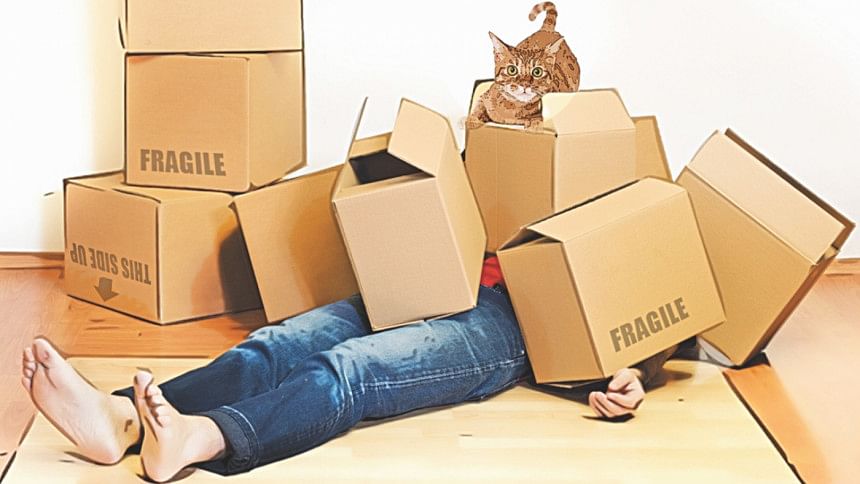Packing tips before you make the big move

Just the thought of stuffing your entire chaotic existence into a gazillion cardboard boxes is enough to give you a panic attack. And knowing you will have to do it all over again in reverse once you get to your new place is plain torture. So you keep postponing the inevitable again and again and again. Before you know it, you're party to a shameful helter-skelter dash for sanity and order: throwing the antique china in with the gardening tools, bubble-wrapping your way around everything, resorting to plastic bags for the breakables because you had no idea you could actually buy cardboard boxes. While everyone would agree that packing is one of the worst most excruciating activities, it's highly likely you're going to get something wrong. Avoid a pre-moving nightmare with these packing tips.
Big boxes are a major no-no
It might seem a little counterintuitive to not pack your large collection of books in large boxes. But packing heavy items or a lot of items in large boxes makes them impossible to lift and increases the chance of the boxes ripping open. So plan in advance and pick out smaller boxes for books and other heavy items.
Packing breakables
Breakables aren't limited to your grandmother's antique china. Today we own countless electronic devices, small and large. When moving, you can't just throw these items into one big box and load them onto a cart.
Large electronics like your flat screen or your washing machine or the desktop PC should most definitely go in their original packing, which will include the Styrofoam padding. For smaller items like kitchen gadgets or DVD players, be sure to pad them as much as possible with bubble wrap or layers of clothing. Wires should be disconnected. If you're worried about what goes where, take a picture of how the devices are connected.
When it comes to other fragile items, like glass and china, always completely fill each box. This might mean using extra protection. Also, plates should always stand on their side, and as long as glass doesn't touch glass, you're good to go.
There's a right way to label
First of all, yes, labeling is crucial. Sure you're going to end up opening all the boxes anyway, but you're only making things easier for yourself by labeling. Instead of labeling the tops, label the sides of the boxes so that you can read them even when they're stacked on top of each other. Include the contents of the box, the owner of the box and/or what room it should go in. Always state it clearly on the box if its contents are fragile. And if you're packing your wedding jewelry or other expensive belongings, try using a code name to avoid giving away the contents to just anybody.
Chuck the cleaning chemicals
If you can, avoid storing and moving flammables and chemicals in boxes. It's a safety hazard. If you absolutely must, do so in your own vehicle, making sure that bottles and lids are securely fastened.
Pointers for packing material
People tend to reuse cardboard boxes lying around the house when it comes to packing. This is completely fine as long as the boxes are sturdy and not ripping anywhere. It's also extremely easy to obtain boxes – you can buy them from the local grocer or hardware and repair shops.
Keep in mind that ink from newspapers can transfer on to porcelain and glass. So opt for plain wrapping material instead.
And load up on packaging tape, be it duct tape or mailing tape. There's no such thing as too much tape!
As abominable as it is, don't leave packing for the last moment. Don't forget to keep an essentials box for the first couple of days – you have no idea how much you'll thank yourself for it afterwards. And as for the more diligent ones out there, who are willing to go the extra mile, make an inventory sheet before you get your hands dirty. And remember: you don't need to take everything. Save yourself a backache and trash what you don't need. Do one last sweep and say goodbye to your former home.

 For all latest news, follow The Daily Star's Google News channel.
For all latest news, follow The Daily Star's Google News channel. 



Comments